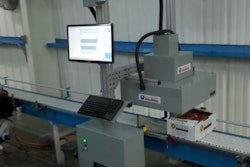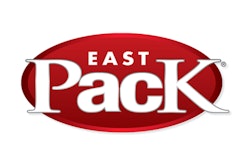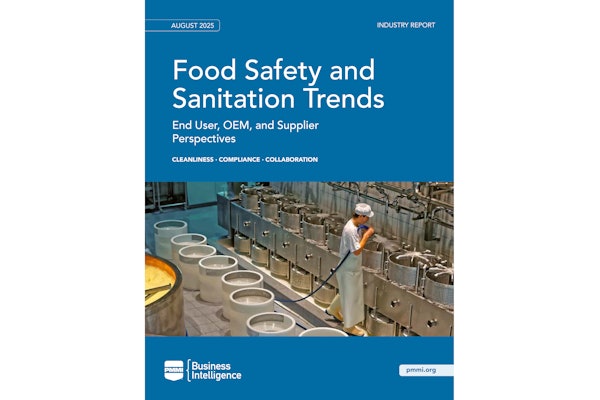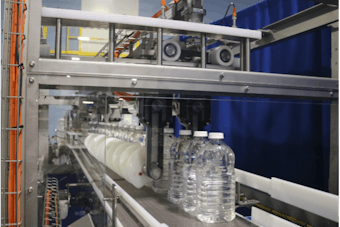Ergonomics aims to make the design of things (i.e. work stations and products) compatible with human limitations. It's not that packaging professionals don't know that ergonomics should be applied to packaging; rather, not all know the depths and variety that the application can take. To correct that situation, packaging professions need a broad perspective, one that regards ergonomics and packaging as an organic pair and grants it front-of-the-mind awareness.
The perspective should be intuitive and no more complicated than required; these are ergonomic principles themselves. A practical way of achieving that is to associate ergonomics with what's most fundamental to a packaging professional: the functions of packaging (protection, communication, and convenience). And whereas each function has aspects that reflect the packaging/ergonomics link, this article addresses protection.
Protection of the product is a function so basic that there's little chance that a packaging professional ever would be unmindful of it; however, the chance is greater that the protection function will be viewed too narrowly. Of course, packaging should protect the product from harm but it also should protect people from the harm that the product could inflict. The latter role, a safety issue, also is a concern of ergonomics, as evidenced by the hierarchy for safe design.
The hierarchy sets three mandates, that: 1) a design be as hazard-free as feasible; 2) safeguards be employed against residual hazards (for, certain hazards are inherent to certain products); and 3) warnings be used to the extent warranted. Two of the three definitely are packaging related. Packaging is a safeguard, shielding people from harm. Packaging is a medium through which warnings are conveyed; therefore, warnings are a component not only of the protection function but also of the communication function (overlap among functions is common and unavoidable, given their interrelatedness).
Regarding protection, knowledge of the limitations, capabilities, and tendencies of the human hand is valuable, since the hand invariably comes in contact with the package. Consider C-R (child-resistant) closures—a merger of packaging and ergonomics, if ever there was one. Industry is aware of the difficulty that those closures impose on prescription-taking seniors with diminished dexterity; but for the most part, the best seniors have been offered is the option of receiving their prescriptions with conventional closures. Any children of seniors are grown, so problem solved, right? Not if one factors in the trend of seniors moving in with those grown children, and, yes, grandchildren.
On the other hand, is industry's determination of the effectiveness of C-R closures too conveniently assuming? Whatever differences there might be among the test protocols, what they share in common is the notion that if a child can't solve the C-R closure within a specified time, the closure is effective. The protocols just might be underestimating the tenacity of some children, who will stick to the task longer than the time afforded a test subject; in fact, a recent segment on a national evening news program showed that children of very tender years, given enough time, can open C-R closures.
Another packaging-ergonomics challenge dealing with the human hand has been ushered in by sustainability. Material reduction, down-gauging, lightweighting—call it what you will—in some instances, has resulted in flimsy packages that present problems upon opening and dispensing. The problem is common in the beverage industry, particularly with water and carbonated soft drinks. The interior pressure produced by the contents gives the tactile impression that the unopened bottle is more rigid than it is; but, after opening, it doesn't take much of a grip to cause some of the contents to flow out the top. The person is in no risk of physical harm; nonetheless, it's an issue of protection. Ergonomics doesn't only strive to be compatible with people physically, but also on other levels, including cognitive and emotional; in other words, people shouldn't be vexed unnecessarily. Packaging should strive for the same. Designing a bottle that's more compatible with the force applied by the human hand also should factor in other variables, among them production costs (especially if the predecessor is a standardized container) and filling-line speeds.
Segueing from contents being too easily extracted to the opposite, there's wrap-rage, the popular term describing people's frustration with opening some types of packages. Research conducted by a variety of entities, inquiring about packaging-related peeves, has consistently shown that topping the list is difficulty of opening. People prefer packaging that can be opened with bare hands, without the use of teeth nor instrument. It's an area forever begging for advancements. Difficult-to-open is not a characteristic unique to blisters and clamshells. Flexible packaging continues its impressive growth at the expense of some forms of rigid packaging; however, some flexible packages, because they stretch, can be difficult to open. Ironically, that's even true of some flexible packages that have a zip-reclosure feature, proverbially putting the cart before the horse.
Yet another reason to apply thought and strategy regarding the human hand is the increasing influence of club stores, headed by Sam's Club and Costco, with their penchant for one-purchase-will-last-a-lifetime size packages and multipacks. What are the practical size limits that a hand can wrap around? What are the practical weights that can be carried with one hand? What's the best way to incorporate handles and other facilitating features? The questions are many, limited only by a packaging professional's devotion to thoroughness. Club stores are known for pick-from-pallet displays, a practice that has ergonomics ramifications; for the integrity of those pallet loads must provide for safe and repeated access. And although a trend not limited to club stores, retail-ready packaging has roots in ergonomics, given that its main objective is to reduce the store's manual labor.
When someone says, "I have my hands full," it's a testament to that person's limitations at multitasking; yet multitasking, at some level, has become a modern-day requirement, posing challenges to packaging and ergonomics. Multitasking divides one's attention, sometimes to the point where the right hand is doing something while the left is doing something else. Such scenarios introduce the potential for mistakes and undesired consequences; by the way, those consequences need not be dire to deserve corrective attention from packaging professionals who understand the ergonomics connection. Lastly, when someone says, "I'm only human," it's not only an admission to limitations, but a plea to, "Cut me some slack." Packaging professionals should acknowledge the admission as well as grant the plea, both through packaging that's ergonomically. Call it lending a helping hand.
Sterling Anthony is a consultant, specializing in the strategic use of marketing, logistics, and packaging. His contact information is: 100 Renaissance Center- P.O. Box 43176; Detroit, MI 48243; 313-531-1875 office; 313-531-1972 fax; [email protected]; www.pkgconsultant.com


























